Super modeling: EC Power’s AutoLion claims unique technology, reliable results and extraordinary savings in development time and cost
With battery technology being one of the key bottlenecks slowing down the widespread adoption of electric vehicles, Pennsylvania’s growing startup EC Power proposes a tantalizing offer to battery developers: cut your product development cycle by around 20 percent, and reduce physical battery testing by as much as 75 percent. EC Power’s Vice President of Business Development Puneet Sinha, PhD, a five-year veteran of GM’s fuel cell and EV battery-development teams, estimates that it takes about two years on average to develop a commercial lithium-ion battery. He predicts that his company’s AutoLion Li-ion battery modeling and virtual testing software products can shorten that cycle by 4-5 months.
Such an appealing claim might arouse more suspicion if the company making it hadn’t already attracted the attention of major players in business, academia and government over the last three and a half years.
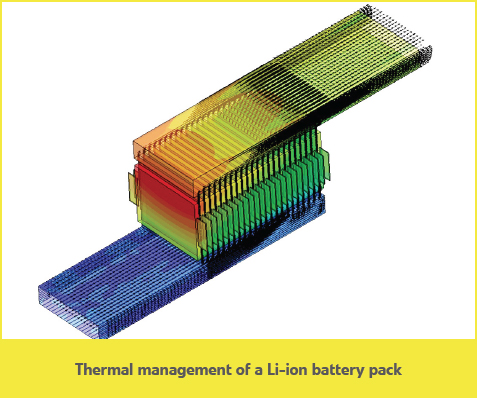

Modeling thermal success
AutoLion offers its customers advanced and unique Li-ion battery modeling tools, but Sinha is quick to point out that his company didn’t invent battery modeling. John Newman, professor at UC Berkeley and author of Electrochemical Systems, pioneered the mathematical modeling of lithium batteries more than 20 years ago in the early 90s. Sinha calls them “legendary” models.
“At that time the Li-ion batteries were largely developed for consumer electronics, and they were more like a button cell,” Sinha said. “Newman captured the physics of those small cells. Nowadays the ‘Newman model’ is the law of the land. If you talk to any other company, at the bottom of their technology is this great model. It is available for free for people. It works perfectly as long as the batteries are small, because then it is only a pure electrochemistry model – it has nothing to do with thermal.”
As applications of lithium batteries steadily increased over the last 20 years, Sinha says, electrochemistry became just one aspect of successfully modeling their behaviors. Larger batteries generated more heat, and as large battery packs moved into automotive spaces, they were being exposed to much more extreme temperatures and weather conditions than in simpler consumer electronics.
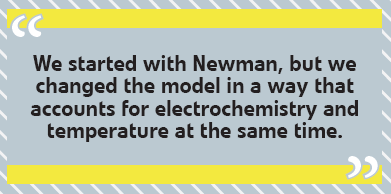

“When Newman developed his model, it was for room temperature,” Sinha said. “Now the cells have to perform at -20° or -30° C to 45° C. So we started with Newman, but we changed the model in a way that accounts for electrochemistry and temperature at the same time. The way batteries work, reaction generates heat, and heat gives back to reaction in a positive feedback loop. Under those conditions in the EV industry, the electrochemistry and temperature have to be very tightly coupled. That’s where we come into play and are changing things.”
With EC Power’s updated battery modeling technology in its AutoLion products, the company hopes to provide complete and reliable battery modeling that development teams at each stage of the process can trust above any other modeling software.
The company’s thermal coupled battery (TCB) model addresses the feedback loop between electrochemistry and temperature in large Li-ion batteries. This also becomes critical for batteries with unconventional geometries or unique form factors.
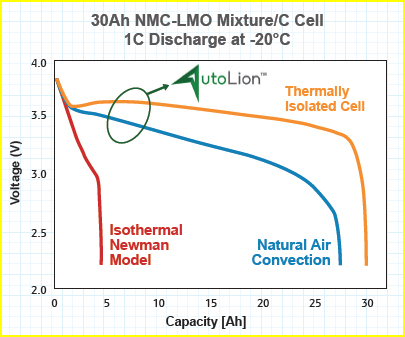

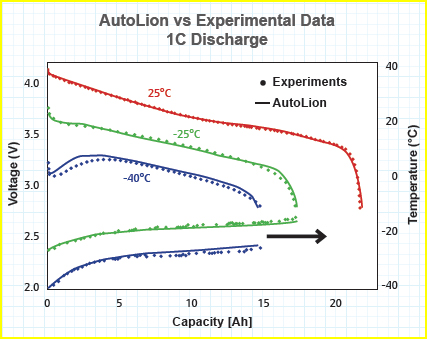

“That’s the key difference between our modeling approach versus the modeling approach of other softwares,” said Sinha. “With automotive batteries, in cold temperatures my battery doesn’t give me enough energy, and in a hot environment like Arizona, my battery is dying too fast. With those two big challenges, the strong coupling between temperature and reaction is very important. Depending on how you operate the battery, you can get a substantially different amount of energy.”
Software as a team player
AutoLion hit the market as a commercialized product in 2012, and EC Power has received several grants and awards from the DOE and the Pennsylvania Department of Environmental Protection to further develop the software’s capabilities. Yet even now, Sinha said that most other commercialized battery models are what he calls “isothermal,” meaning they don’t take temperature into account.
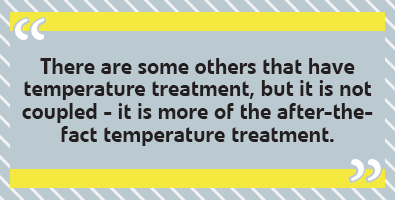

“There are some others that have temperature treatment, but it is not coupled – it is more of the after-the-fact temperature treatment,” he said. “So especially where the coupling between temperature and reaction is very strong, they don’t capture the cell behavior very well. They take temperature into account, but don’t take care of this feedback loop between temperature and reaction. Between 20° and 35° C, it won’t matter much. But at 0° C or lower or at 40° C and above performance is a very strong function of temperature.”
During his time on R&D teams at General Motors, Sinha was focused on materials and chemistries at the cell-design level, whereas other teams worried only about the system pack-level requirements. Considering that outside suppliers and customers sometimes used different modeling technologies that didn’t work together, it became a very disjointed process.
“You might have five different people doing five different things,” Sinha said. “So the models were not doing what they were supposed to do, and everybody at GM was feeling that.”
Sinha knew the founder of EC Power, and when he saw that its approach was to take into account all aspects of Li-ion batteries in one holistic model, he wanted in on the team. “It captures all the aspects of batteries,” he said. “It’s not only for performance, but also for life, safety and system integration. Anybody in the whole supply chain, whether the material guys, cell guys or system guys, they can use our software to help their respective challenges – all on the same platform. I don’t think any other company offers this level of solution for the whole supply chain. There are software products focused on system engineering, but they do not communicate with the software for cell-level or material-level challenges.”
Sinha added that the whole point of AutoLion is to give its users the confidence to make actual product decisions based on modeling results, so they can streamline their work. That’s exactly what various teams working at GM could not do effectively.
“They were using two different softwares that require different types of inputs and relied on different modeling approaches,” Sinha said. “The two teams were not very strongly collaborative. AutoLion is a software suite with different programs targeted at different applications. You get all the software based on the same foundation, requiring the same input and behaving in the same manner. If I am a system guy and you are a material guy, we can take our simulation exercises and make a collaborative decision about what material to use or what kind of system to develop.”
Bringing together formerly separate teams is what Sinha calls “virtual collaboration,” and it’s the gap in the automotive battery industry that EC Power wanted to address with AutoLion.


“We allow people to do analysis so they can unleash innovation, but also address things that are important to them so that they can rely on the simulation,” Sinha said. “I believe that garbage in is always garbage out. If software solves every equation, but nobody can rely on that information, then what is the point? Our capabilities are capturing the real data. That’s why we put a lot of emphasis on comparing our results with data and seeing how well we capture the real physics.”
Sinha wants AutoLion users to be able to “stretch” the results of the software, meaning that the results will not only apply to a “sweet spot” scenario, but will also be useful when applied to a whole range of scenarios.
The AutoLion line
The AutoLion suite consists of three different but related products, all using the same platform. AutoLion-1D addresses the needs of material developers and cell manufacturers for Li-ion technology; AutoLion-ST targets Li-ion system integrators and control developers; and AutoLion-3D focuses on Li-ion cell and battery pack manufacturers. All different levels of the development process can work on and communicate with the same software products.
“The lithium-ion battery is very interesting. It is the perfect combination of chemistry, mechanical engineering with thermal influences, and also electrical engineering where the electronics come into play,” Sinha said.
Because new Li-ion chemistries, physics and capabilities are always being developed, EC Power continually updates its AutoLion products. Sinha said two or three updates will come out per year, adding new features, incorporating user feedback and/or making the product more user-friendly.
“The chemistries within a cell completely dictate everything that is happening with the battery,” Sinha said. “There are so many chemistries already out there in the commercial space, and so many chemistries under development. Every time we look at a new software version, my directive to my team is, make sure people who have no modeling experience can still use the software and get the desired information. Also, people who are extremely experienced using modeling tools can use advanced features to meet their needs. Flexibility and user-friendliness drive all of the new features and new ways of doing things.”
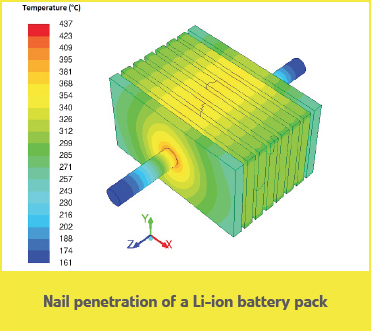

A model saver
Thermal runaway breaks out in Li-ion batteries based on a chain reaction that Sinha referred to earlier as a feedback loop. Rising temperatures can make a battery’s reactions happen faster and faster, contributing more and more to the temperature rise until it is out of control. However, the benefits of AutoLion software can also feed back into each other in a positive way for the battery. All the different battery development teams using AutoLion can make meaningful design decisions from just one simulation’s results, leading to less need for physical testing, which in turn means savings in time and money in an ideal scenario.
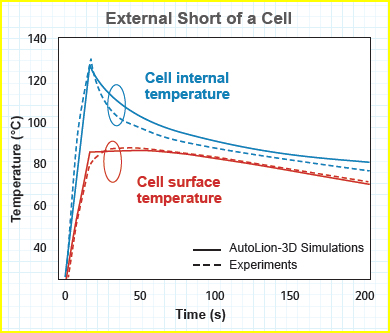

“We can save them a lot of time,” Sinha said. “System-level guys can use our software for system architecture. Before the system you need to have the pack. At the pack level you have indicators for what kind of thermal management to use, how to connect different cells, and when they are going to be safe. We can do all the safety simulations at the pack level and all the thermal management design developments, using AutoLion. Should I have air cooling in the cold places and maybe liquid cooling in the hot places? If you come down to the cell level you see what cell design to use, will it last, how will it perform – people are answering all those questions with AutoLion right now.”
If AutoLion users are building packs, testing them, breaking them and then re-tweaking them virtually before testing, EC Power claims that those users can make reliable product development decisions 10 times faster and with a lot less physical testing. And Sinha thinks that EC Power has made that possible because of the kind of people working on AutoLion.
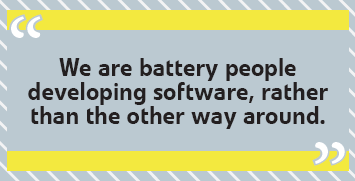

“Our DNA is very different from other software companies who are modelers trying to model batteries,” he said. “We are battery engineers. All of us at my company are battery engineers doing things for battery people. I can understand their problems…talk their language. I’ve been in that world before. We are battery people developing software, rather than the other way around. My whole team feels very happy to provide some missing pieces that the industry is looking for. The whole idea is to provide solutions that really matter in the world.”
Virtual models to the physical business
EC Power LLC was founded in 2011 in State College, Pennsylvania, as a spin-off from Penn State University, and enjoys close collaboration with the university’s Electrochemical Engine Center, Energy Nanostructure Lab and Battery & Energy Storage Technology center on various joint projects.
Right out of the gate, EC Power won a couple of government-backed contracts in the summer of 2011: a DOE/National Renewable Energy Laboratory contract for developing its Li-ion battery design tool (AutoLion) in partnership with Ford, Johnson Controls and Penn State; and then in partnership with Penn State, another DOE contract for $5 million towards the development of lithium-sulfur cells that combine high energy density and smaller size with improved performance and life.
“The software unit is our main revenue stream, but we have other business units as well,” said Sinha, who completed his PhD from Penn State before departing for GM. “We also have a lithium-ion battery technology that we call all-climate batteries. It addresses a very key pain point of lithium-ion batteries; it provides a very reliable driving range and power in all weather conditions. So we have a software unit, and also extensive capabilities for cell prototyping and testing.”
For such needs, EC Power operates a Li-ion prototyping facility in State College, PA. “My whole team – be it the software team or hardware teams – all of us are battery engineers at heart,” Sinha said.
The AutoLion software attracted big customers like Ford and Johnson Controls early in EC Power’s existence, and the company also has a growing list of clients that Sinha wants to keep secret for now (although he hinted that three of the largest battery manufacturers and major automakers are using AutoLion).
“Right now we are getting a lot of interest and customers from automakers in the US, Europe and Japan,” he said. “Battery manufacturers are using the software. A lot of universities are using the software. We have been working one-on-one with big companies, and I think now we are at a critical mass where we have a very good understanding of any kind of user you can think of and how they will use our software. I feel more comfortable as VP of the company to go out and offer people solutions. The way I look at it is, if I can convince these big companies to use my software, then I have something I can offer to anyone.”
This article originally appeared in Charged Issue 16 –November/December 2014



















































